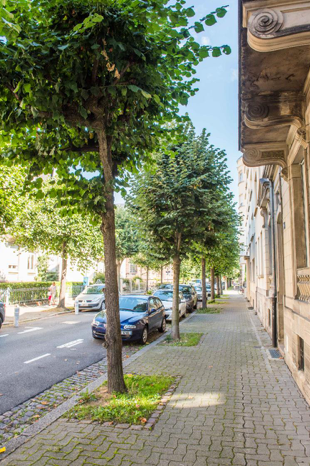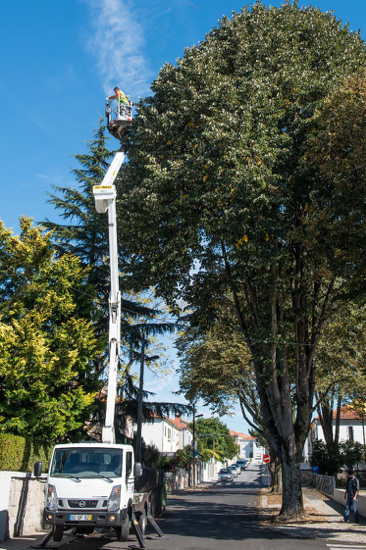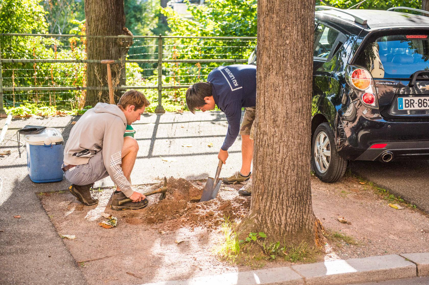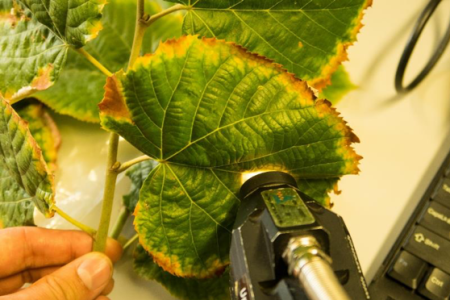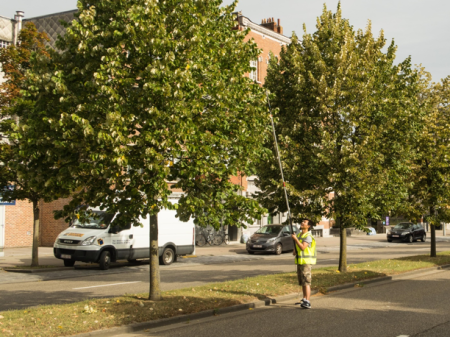
Area characterisation:
Leuven is a small and densely populated city in the Northern part of Belgium. Within the city, study trees were selected which were (i) boxed (i.e. sealed soil surface at all sides), (ii) linear (i.e. along streets and sealed soil surface at two sides), and (iii) unlimited (in small parks, no sealing).
Objective:
The aim is (i) to provide an assessment of the EcM community and functional group composition of urban trees, and of its environmental drivers, using next generation sequencing techniques; (ii) to relate specific EcM, or functional groups of EcM, to tree health, and tree ecosystem service delivery and resilience, using advanced noninvasive spectral and physiological sensing technology, diameter growth measurements, and urban biophysical modeling; and (iii) to develop and test (in situ & ex situ) a dedicated EcM-inoculum to improve urban tree health, and ecosystem service delivery and resilience.
Images
Financing:
This research was funded through the 2015-2016 BiodivERsA COFUND call for research proposals, with the national funders BelSPO (Belgium), FWO (Belgium), ANR (France) and FCT (Portugal).
Actions:
- Measuring tree vitality of selected urban trees using hyperspectral remote sensing and real time measurement trunk diameter increments
- Characterizing the EcM community of the trees using Illumina pyrosequencing
- Characterizing the abiotic environment of the trees (soil characteristics, growing space, 3D built environment)
- Relating EcM community composition and functional richness (2) to tree viability (1) while controlling for abiotic environment (3)
- Using heat transfer models to model mitigating effects of the model tree species on the urban heat island (UHI) effect
- Developing a real time q-PCR protocol for in situ monitoring of 5 different selected EcM species for tree inoculation
- Performing in situ and ex situ inoculation experiments on the model trees, and monitoring vitality response through measures developed under (1)
- Deliver an EcM inoculum that improves the vitality of the model tree species in urban environments
Transferability of result:
Our protocols to measure tree vitality and EcM composition, and the general scientific insights of this study will be made publicly available through publications in the peer reviewed literature and symposium presentations. The EcM inoculum composition and formulation will likely also be made publicly available through publications in the peer reviewed literature, and is expected to be effective for all Tilia species in urban environments.
URBANMYCOSERVE is a European-wide BiodivERsA project with case studies in different European cities. See available URBANMYCOSERVE case-studies in:
- Leuven
- Porto
Lessons learnt:
It is currently too early to answer this question as the project is still on-going.
Organisations:
Leuven municipal greenery service (Mr. Jan Van Dyck)
Kapucijnenvoer 30, B-3000 Leuven.
Contacts:
BiodivERsA Science-policy/society interfacing: Frederic Lemaître, frederic.lemaitre@fondationbiodiversite.fr
URBANMYCOSERVE Project Coordinator: Prof. Dr. Olivier Honnay, KU Leuven, olivier.honnay@bio.kuleuven.be
NBS goals:
- Enhancing sustainable urbanization
- Developing climate change mitigation
- Developing climate change adaptation
- Nature-based solutions for improving well-being in urban areas
- Increasing carbon sequestration through nature-based solutions
NBS benefits:
- Reducing temperature at meso or micro scale
- Carbon sequestration and storage
- Increase Biodiversity
- Increase quality and quantity of green and blue infrastructures
- Creation of green jobs relating to construction & maintenance of NBS
- Increase awareness of NBS solution & their effectiveness and co benefits
- Increase population & infrastructures protected by NBS
- Increase well-being
- Increase willingness to invest in NBS
- Provision of health benefits
